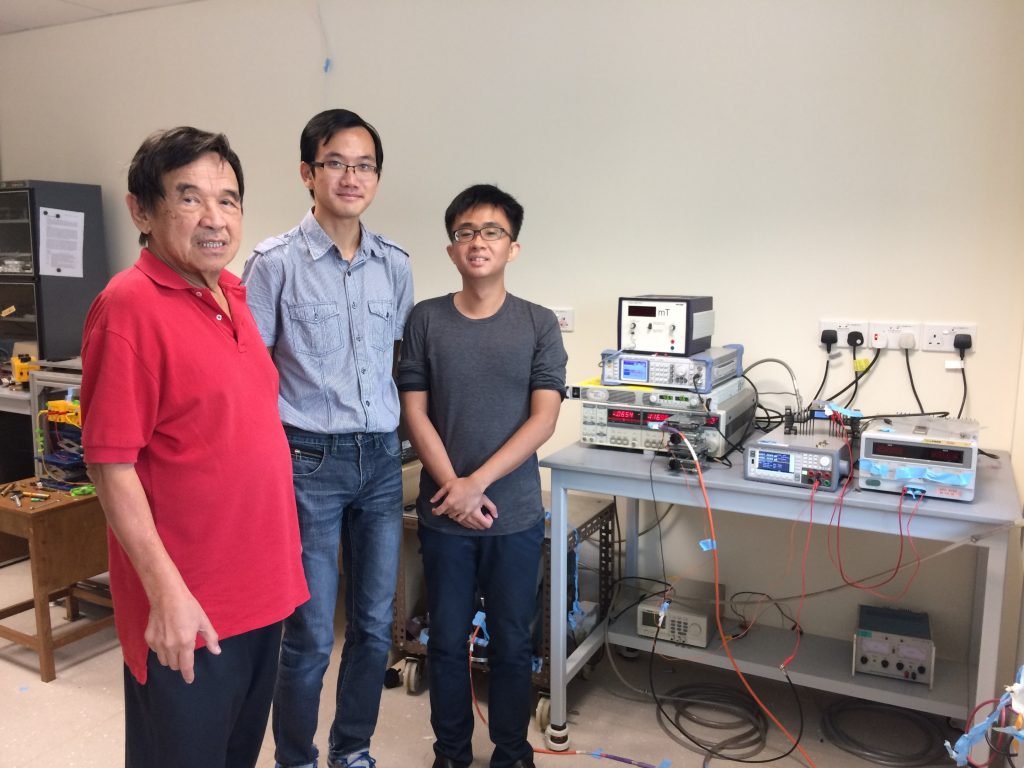Winning the Outstanding Undergraduate Researcher Prize
Congratulations to our year 4 physics student Mr Tay Zhi Jian Daniel for winning the Outstanding Undergraduate Researcher Prize (OURP) for AY16/17. The following is an email interview with Daniel to find out more about his research endeavour.
Before you embark on your undergraduate research, what ideas concerning research did you have in mind?
I was fortunate in that while studying in secondary school, I had the chance to take part in the Science Mentorship Programme in which I worked under Dr Nikolai Yakovlev, a senior scientist at ASTAR working on magnetic thin films. Subsequently in junior college, I chose to do my H3 in Science Research, again under Dr Nikolai. Hence I was fairly familiar with the research process even before entering university. In university, when choosing my UROPS project, I naturally chose to work under Prof Ong Chong Kim whose lab, the Centre for Superconducting and Magnetic Materials (CSMM), has done extensive research works in the field of magnetic films. Of course, the level of scientific rigor is very different as an undergraduate, but the sense of wonder and excitement while pursuing research is definitely the same.
Share with us more about your research topic.
As every science student knows, electrons are particles with electric charge and magnetic spin. Most everyday devices (laptops, iphones, televisions etc) typically work by manipulating electric charges. However, a growing field of study known as spintronics seeks to explore ways to utilize magnetic spins to create novel devices. In my project, I studied one type of proposed spintronic device consisting of a metamaterial split ring resonator and a ferromagnetic yttrium iron garnet film. I was able to show that my device could be used to control microwave transmission.
What were some challenges you faced during your research and your approach to solve them?
One key challenge I faced was that as the device being studied was relatively novel, there was a need to seek resources outside of the CSMM lab for the necessary equipment and facilities. I was thankful for the assistance given by the physics department which enabled me to conduct my experiments successfully at the end. Much of the lithography work to fabricate the split ring resonator was done with the help of the facilities at the Centre for Iron Beam Applications (CIBA) while the cutting and drilling were done at the workshop.
Another key challenge for me was that the microwave measurements generated more than 20 GB of data—far too much data to be analysed using simple tools such as excel. So I had to write my own code in MATLAB to process and analyse the data produced in the experiment.
If you have a chance to redo your research, what do you think you would have done differently?
In my project, a lot of time was wasted during the lithography process, which was plagued with various unfortunate and unnecessary problems. On hindsight, this was mainly due to the mistake of designing my device solely by theoretical considerations and neglecting to consider the practical aspects of how my proposed design would be fabricated in the lab. This flawed design approach gave rise to an end product that was extremely problematic to fabricate via lithography, which consumed far longer time than previously anticipated. If I had a chance to redo my research, I would have studied the lithography process in more detail, spoken to the people in charge of the lithography equipment in CIBA to understand its limitations and taken these limitations into account during the design stage of the project.
What has your research experience taught you?
I would like to share two key takeaways here. Firstly, physics research often conjures the image of physicists like Albert Einstein and Stephen Hawking who predominantly work with theory. While highly theoretical sub-disciplines of physics do exist, I have learnt that contrary to popular belief, most physics research groups today work closely with the industry. So it is important for physics students to be acquainted with the latest technological developments.
Secondly, I have learnt that coding is an indispensable part of modern physics research. Due to the vast amount of experimental data that is collected in the course of one’s research, it is almost impossible to analyse the data “by hand”. Instead, specialised software and/or self-written code often has to be used to analyse the data, so it is important for physics students to have at least some familiarity with coding.

